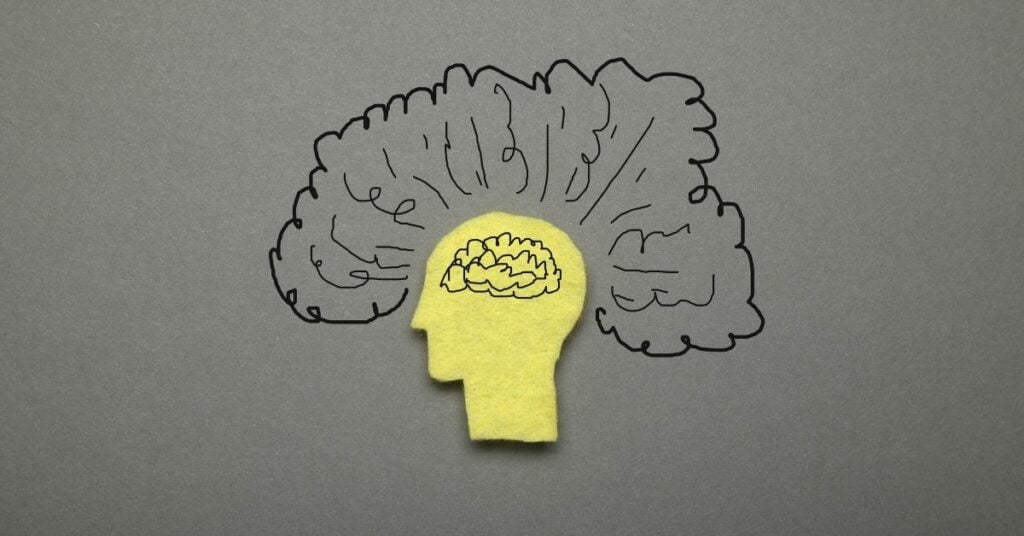Anxiety and depression: How they’re related and can be treated
Reviewed by Brooks Baer, LCPC, CMHP

Anxiety and depression are two different disorders with some overlapping symptoms, such as trouble sleeping and concentrating. Anxiety typically involves excessive worry and irrational fear, while the main symptoms of depression include sadness, hopelessness, or emptiness.


The two disorders often happen together. One study suggests that nearly half of people with either anxiety or depression also meet the criteria for the other disorder.1
While anxiety and depression can occur at the same time, having one condition doesn’t necessarily mean you have the other. It can be challenging to figure out if you’re struggling with anxiety, depression, or both. A mental health professional can help you assess your situation and start a treatment plan.
What is anxiety?
Anxiety is a mental health disorder that involves excessive, persistent fear and worry. While occasional anxiety is normal, an anxiety disorder can make daily life difficult and be hard to control without help.
The focus of a person’s anxiety can vary depending on the type of anxiety disorder they have. Common ones include:
- Generalized anxiety disorder (GAD)
- Panic disorder
- Social anxiety (also called social phobia)
- Specific phobias
- Obsessive-compulsive disorder (OCD)
It’s worth noting that eating disorders, though they can result from anxiety and often co-occur with anxiety disorders, aren’t classified as anxiety disorders themselves.2
What is depression?
Depression is a mood disorder associated with feelings of sadness, loneliness, emptiness, and hopelessness. Someone struggling with depression may experience extremely low moods and overwhelming sadness that makes it hard to enjoy life and maintain meaningful relationships.
Common types include:
- Major depressive disorder (MDD)
- Persistent depressive disorder (PDD)
- Postpartum depression (PPD)
- Seasonal affective disorder (SAD)
- Psychotic depression
Depression can also be a symptom of other mood disorders, including bipolar disorder.
Symptoms of anxiety and depression
The symptoms of anxiety and depression often overlap. Anxiety can also be a symptom of depression, while depression can be caused by certain anxiety disorders.
Some of the most common symptoms of both disorders include:
- Irrational and uncontrollable fear or worry
- Feelings of sadness or worthlessness
- Loss of interest in activities
- Panic attacks
- Insomnia
- Chronic fatigue
- Headaches
- Difficulty relaxing
Anxiety symptoms
The emotional and physical symptoms of anxiety can make it hard to handle daily tasks. Symptoms of an anxiety disorder extend beyond what’s considered normal worry and involve chronic concerns that impact many aspects of your life.
Common emotional symptoms include:
- Debilitating fears
- Irrational thoughts
- Irritability
- Tension or nervousness
- Uncontrollable worry
- Dread
- Panic
Common physical symptoms include:
- Fatigue
- Increased heart rate
- Excessive sweating
- Tense muscles
- Jaw clenching and teeth grinding
- Difficulty sleeping
Depression symptoms
Everyone feels sad or down from time to time. Depression, by contrast, involves prolonged periods of sadness and other negative emotions, often with physical symptoms.
Common emotional symptoms include:
- Loss of interest in activities you once enjoyed
- Overwhelming feelings of sadness or emptiness
- Loss of hope and a sense of helplessness
- Thoughts or talk of suicide (suicidal ideation)
- Attempted suicide
Common physical symptoms include:
- Lack of energy
- Chronic fatigue
- Sudden changes in weight or eating habits
- Changes in sleeping habits
- Difficulty focusing and making decisions
Causes of anxiety and depression
Many factors can play a role in the development of depression and anxiety. If you struggle with both conditions, you may find yourself in a cycle where one disorder worsens the other—for example, you might feel depressed due to excessive worries.
Factors that often underlie both disorders include:
- Genetics: Being genetically more susceptible to one disorder may make you more susceptible to others as well.
- Anxiety disorder diagnosis: Left untreated, anxiety disorders can lead to depression.
- Environmental factors: Certain life events, especially traumatic ones, can contribute to the development of both disorders.
- Other mental health disorders: Conditions such as posttraumatic stress disorder (PTSD) can increase your risk.
Treating anxiety and depression
Professional treatment—therapy, medication, or a combination of both—can help both anxiety and depression. Self-care strategies can also be useful for managing everyday symptoms in the moment.
Medication
Several types of medication are commonly prescribed for both disorders:
- Anti-anxiety medications can be used to minimize fear, worry, and other anxiety symptoms. With these symptoms controlled, symptoms of depression may also lessen.
- Antidepressants, such as selective serotonin reuptake inhibitors (SSRIs) and serotonin-norepinephrine reuptake inhibitors (SNRIs), aim to improve your mood and reduce negative emotions associated with anxiety and depression.
- Mood stabilizers may be prescribed to help manage low moods and negative thoughts if antidepressants aren’t effective.
Psychotherapy
Therapy can help you manage symptoms of both disorders. These types of treatment are often used for anxiety and depression:
- Cognitive behavioral therapy (CBT) is often used to treat co-occurring anxiety and depression. It can help you learn to identify and interrupt cycles of distress.
- Psychodynamic therapy involves examining your thoughts, feelings, conflicts, and relationship patterns in order to understand and address root causes of your anxiety and depression.
- Exposure therapy involves exposing you to your fear or phobia in a safe environment. This can help reduce anxiety triggered by specific things, ideas, or situations.
At-home strategies
In addition to professional treatment, simple adjustments to your daily routine can help you manage everyday symptoms of anxiety and depression. Note that these at-home strategies are not cures, and they work best when paired with therapy, medication, or both.
Helpful techniques include:
- Meditating to promote relaxation and stop racing thoughts
- Doing deep breathing exercises to calm the mind and body
- Engaging in physical activity to increase feel-good chemicals
- Eating nutritious foods
- Creating and following a morning and evening routine
- Practicing a healthy sleep schedule
Get help now
Anxiety and depression can make daily life difficult and less fulfilling, especially when they happen at the same time. If you’re struggling with symptoms, a therapist can help. Contact your primary care doctor or find a mental health professional near you to begin managing your anxiety and depression.
If you’re in crisis or having thoughts about suicide, help is available now. For free and confidential support anytime, call the 988 Lifeline at 988 or at 1-800-273-TALK (8255), or text HOME to 741741 for the Crisis Text Line. Both are available 24/7.

Sources
About the author
The editorial team at therapist.com works with the world’s leading clinical experts to bring you accessible, insightful information about mental health topics and trends.
Related articles

10 natural remedies for anxiety
Natural remedies for anxiety offer a potential alternative to medication...

Ask a Therapist: Fears and anxieties
Join host Amye Archer and guests Kevin Chapman and Ilyse Kennedy for insightful...

Climate change and mental health
Climate change and extreme weather events can create both acute and chronic...

Anxiety attacks: Symptoms, causes, and treatments
Anxiety attacks can have a negative impact on those who experience them, but...
